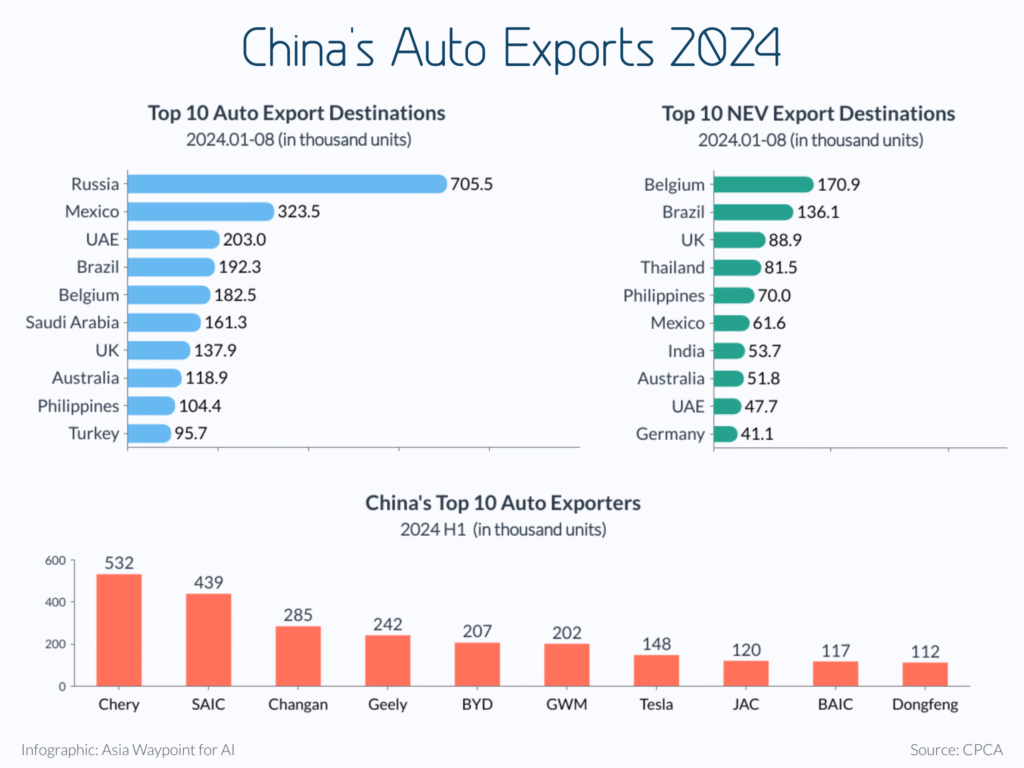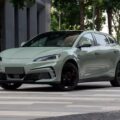
Chinese cars are gaining popularity across the globe.
China is no longer just the world’s largest automotive market — it’s also becoming one of the top exporters of vehicles , especially electric cars. In 2025, millions of Chinese-made cars are being sold in countries across Asia, Africa, Latin America, Europe, and even North America.
In this article, we’ll explore which countries use Chinese cars , why they’re becoming so popular, and what this means for the global auto industry.
Why Are Chinese Cars Gaining Global Popularity?
Several factors are driving the rise of Chinese cars abroad:
- ✅ Affordable Pricing : Chinese models often cost significantly less than Western or Japanese equivalents.
- ✅ Modern Features : Touchscreens, driver assistance systems, and smartphone integration come standard.
- ✅ Electric Vehicle Leadership : China leads the world in EV production and exports.
- ✅ Faster Delivery Times : With growing export infrastructure, availability has improved dramatically.
Top Countries That Use Chinese Cars
1. Russia

After many Western brands left due to sanctions, Chinese automakers quickly filled the gap .
- Brands: Chery, Geely, BYD, Great Wall Motors
- Market Share: Over 40% of new car sales
- Popular Models: Chery Tiggo 7 Pro, BYD Sealion 6, Haval Jolion
2. Brazil

Brazil has become a major hub for Chinese car imports in Latin America .
- Brands: Chery, BYD, JAC, DFSK
- Trend: Growing interest in electric and hybrid vehicles
- Local Production: Chery has a local assembly plant in São Paulo
3. Chile

Chile is among the top EV markets in South America , and Chinese brands are leading the charge.
- Brands: BYD, NIO, Aiways
- Government Support: Strong incentives for electric vehicle purchases
- Growth Rate: Chinese EVs now account for over 50% of all EV imports
4. Thailand

Thailand has become a major destination for Chinese electric and gasoline-powered cars in Southeast Asia.
- Brands: BYD, Great Wall Motors, SAIC MG
- Local Assembly: Many brands have opened factories in Bangkok region
- Policy Shift: Thai government encourages EV adoption and investment
5. Mexico

Despite proximity to the U.S., Mexico is importing more Chinese cars , raising concerns from American and European automakers.
- Brands: Chery, BYD, OMODA (joint venture with Chery)
- Market Growth: Imports up over 60% in the last two years
- Competition: Mexican consumers are choosing affordable Chinese models over pricier alternatives
6. Middle East (UAE, Saudi Arabia, Egypt)

The Middle East is seeing a surge in Chinese car sales, especially SUVs and electric models .
- Brands: Chery, Geely, BYD, DFSK
- UAE & Saudi Arabia: Focusing on green mobility and EV infrastructure
- Egypt: Becoming a regional hub for Chinese car exports in Africa
7. Africa (Nigeria, Kenya, South Africa)

Many African nations rely on affordable and durable vehicles , and Chinese cars fit the bill.
- Brands: Chery, Geely, Lifan, FAW
- Demand Drivers: Low prices, spare parts availability, and dealer networks
- Used Car Market: Also booming with Chinese imports
Emerging Markets Using Chinese Cars
- 🇮🇳 India – Rising interest in budget SUVs and EVs
- 🇨🇴 Colombia – Increasing imports of Chery and BYD
- 🇵🇭 Philippines – Growth in compact and electric models
- 🇸🇦 South Africa – Expanding dealership presence by Chinese brands
How Are Western Countries Reacting?
While Chinese cars are growing in popularity globally, some Western governments and automakers are pushing back :
- ⚠️ The European Union is considering tariffs on Chinese electric vehicles.
- ⚠️ The United States has tightened regulations on Chinese-made batteries and tech.
- ⚠️ Trade disputes are increasing as China becomes a dominant global exporter .
However, for many countries, the benefits outweigh political concerns , especially when it comes to affordability and innovation.
Final Thoughts
From Russia to Brazil , Chile to the Middle East , Chinese cars are being embraced around the world. With their combination of affordability, modern features, and growing electric vehicle offerings , it’s clear that China is reshaping the global automotive landscape .
As Chinese automakers expand into new markets and invest in local production, their influence is only expected to grow.
Frequently Asked Questions (FAQ)
Q: Are Chinese cars reliable?
A: Modern Chinese cars have improved significantly in quality and reliability, matching or exceeding many international competitors.
Q: Do Chinese cars have warranties overseas?
A: Yes, most brands offer international warranties and are expanding service centers in key export markets.
Q: Are Chinese cars mostly electric?
A: While EVs are a big part of the export strategy, many Chinese cars sold globally are still gasoline-powered SUVs and sedans .
Q: Which country buys the most Chinese cars?
A: Russia currently leads in terms of volume and market share, followed closely by Thailand and Mexico.

